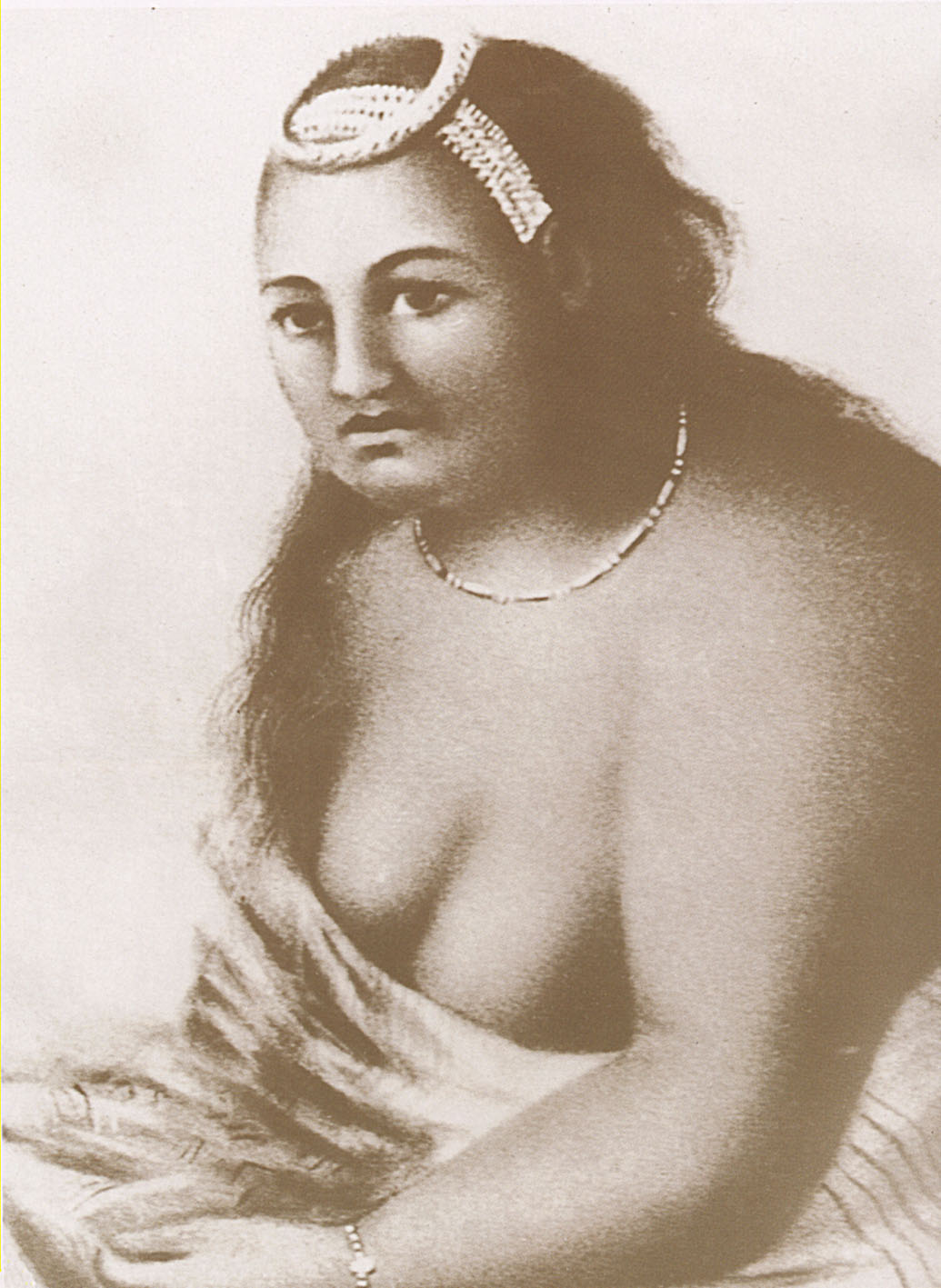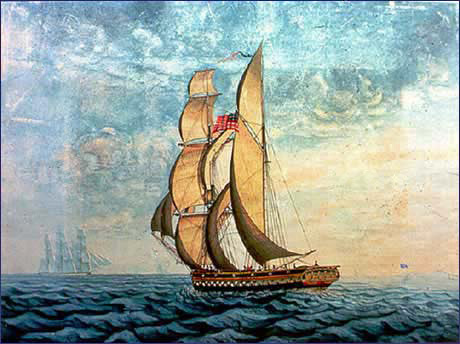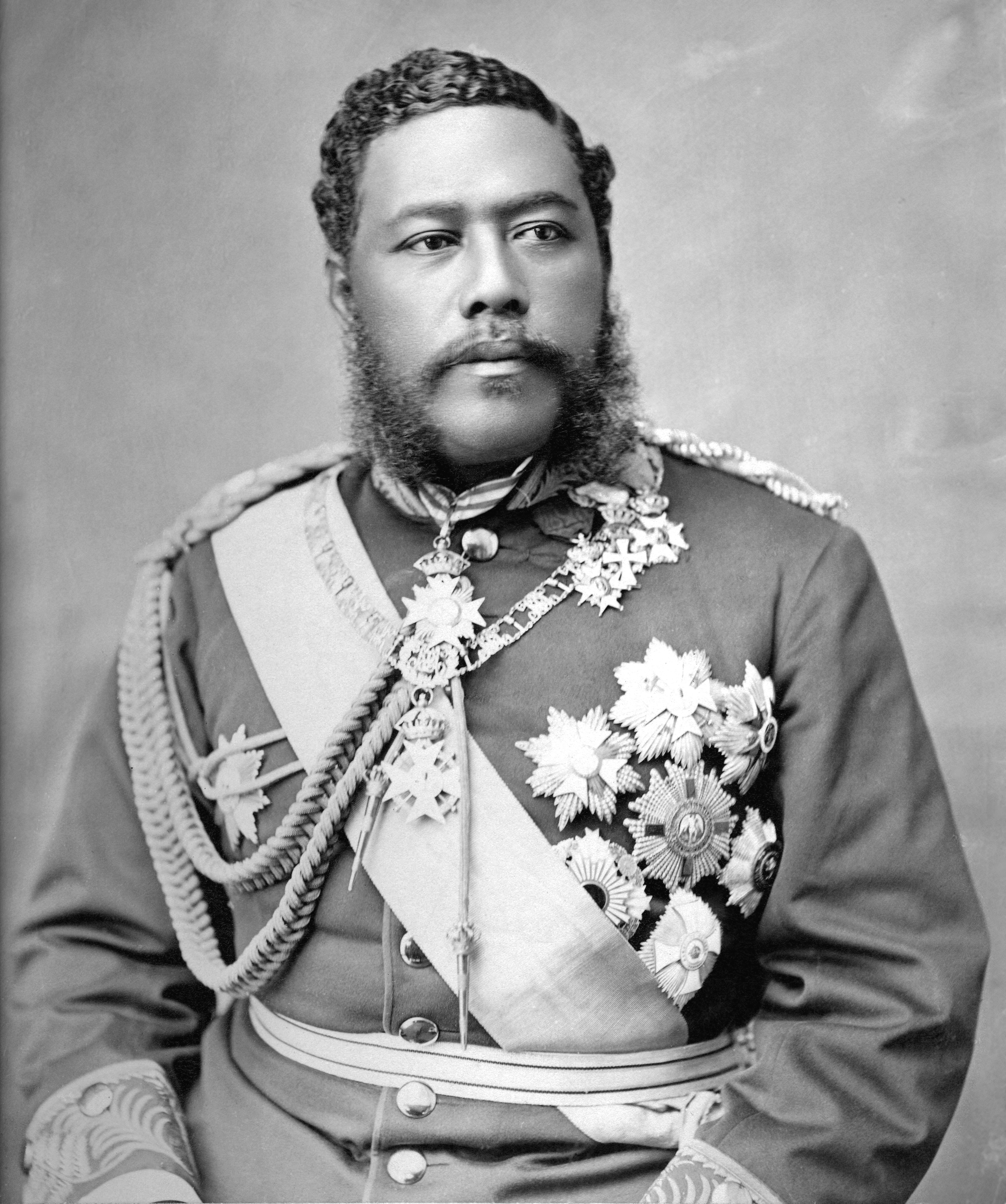|
Kaʻahumanu
Kaahumanu (March 17, 1768 – June 5, 1832) (''"the feathered mantle"'') was queen consort and acted as regent of the Kingdom of Hawaii as Kuhina Nui. She was the favorite wife of King Kamehameha I and also the most politically powerful, and continued to wield considerable power as co-ruler in the kingdom during reigns of his first two successors. Early life Kaahumanu was born in a cave called Puu Kauiki in Hāna on the Hawaiian island of Maui. She was born on 17 March 1768. The present Kaahumanu Society celebrates the birthday of its namesake on March 17. Her father was Keʻeaumoku Papaʻiahiahi, a fugitive alii (noble) from the island of Hawaii, and her mother was Nāmāhānaikaleleokalani, the wife of her half-brother the late king of Maui, Kamehameha Nui. Through her mother she was related to many kings of Maui. Through her father, she was the third cousin of Kamehameha I, both sharing the common ancestor, Princess Kalanikauleleiaiwi of the island of Hawaii. She w ... [...More Info...] [...Related Items...] OR: [Wikipedia] [Google] [Baidu] |
House Of Kamehameha
The House of Kamehameha ''(Hale O Kamehameha)'', or the Kamehameha dynasty, was the reigning Royal Family of the Kingdom of Hawaii, beginning with its founding by Kamehameha I in 1795 and ending with the death of Kamehameha V in 1872 and Lunalilo in 1874. The kingdom continued for another 21 years, until its overthrow in 1893 with the fall of the House of Kalakaua. Origins of the Kamehameha dynasty Originating lines The origins of the House of Kamehameha stems from the progenitor, Keōua Kalanikupuapa`ikalaninui who was the sacred father of Kamehameha I and by the royal court of his brother Kalaniʻōpuʻu who later became king and gave his war god Kuka'ilimoku to Kamehameha I and he became the king by conquest, uniting all the Hawaiian islands into one kingdom under his undivided rule. Kalaniʻōpuʻu's father was Kalaninuiʻīamamao and Keōua's father was Kalanikeʻeaumoku, both were sons of Keaweʻīkekahialiʻiokamoku. They shared a common mother, Kamakaʻīmoku. Both ... [...More Info...] [...Related Items...] OR: [Wikipedia] [Google] [Baidu] |
Kuhina Nui Of The Hawaiian Islands
Kuhina Nui was a powerful office in the Kingdom of Hawaii from 1819 to 1864. It was usually held by a relative of the king and was the rough equivalent of the 19th-century European office of Prime Minister or sometimes Regent. Origin of the office Before the establishment of the office of ''Kuhina Nui'' by Kamehameha, there was a position called Kālaimoku ("kālai" meaning "to carve" and "moku" being an island). This was an ancient office from the very dawn of Hawaiian civilization. During this time before the ''Kuhina Nui'' Kalanimoku, a trusted chief of Kamehameha, was the Kālaimoku until Kamehameha established the office of the ''Kuhina Nui''. When King Kamehameha II assumed the throne in 1819, his father's favorite wife, Queen Kaʻahumanu, told him Kamehameha I had wished for her to rule the kingdom alongside him. Whether this was really the will of Kamehameha I is a matter of debate. In either case, Kamehameha II did not object and the office of ''Kuhina Nui'' was created f ... [...More Info...] [...Related Items...] OR: [Wikipedia] [Google] [Baidu] |
Kuhina Nui
Kuhina Nui was a powerful office in the Kingdom of Hawaii from 1819 to 1864. It was usually held by a relative of the king and was the rough equivalent of the 19th-century European office of Prime Minister or sometimes Regent. Origin of the office Before the establishment of the office of ''Kuhina Nui'' by Kamehameha, there was a position called Kālaimoku ("kālai" meaning "to carve" and "moku" being an island). This was an ancient office from the very dawn of Hawaiian civilization. During this time before the ''Kuhina Nui'' Kalanimoku, a trusted chief of Kamehameha, was the Kālaimoku until Kamehameha established the office of the ''Kuhina Nui''. When King Kamehameha II assumed the throne in 1819, his father's favorite wife, Queen Kaʻahumanu, told him Kamehameha I had wished for her to rule the kingdom alongside him. Whether this was really the will of Kamehameha I is a matter of debate. In either case, Kamehameha II did not object and the office of ''Kuhina Nui'' was created f ... [...More Info...] [...Related Items...] OR: [Wikipedia] [Google] [Baidu] |
Keʻelikōlani
Ruth Ke‘elikōlani, or sometimes written as Luka Ke‘elikōlani, also known as Ruth Ke‘elikōlani Keanolani Kanāhoahoa or Ruth Keanolani Kanāhoahoa Ke‘elikōlani (June 17, 1826 – May 24, 1883), was a formal member of the House of Kamehameha (founding dynasty of the Hawaiian Kingdom), Governor of the Island of Hawaiʻi and for a period, the largest and wealthiest landowner in the Hawaiian islands. Keʻelikōlani's genealogy is controversial. Her mother's identity has never been in question but her grandfather Pauli Kaōleiokū's relationship to Kamehameha I is heavily disputed. While her father has been legally identified as early as 1864, disputes to that lineage continued as late as 1919. As one of the primary heirs to the Kamehameha family, Ruth became landholder of much of what would become the Bernice Pauahi Bishop Estate, funding the Kamehameha Schools. Her name Keʻelikōlani means ''leaf bud of heaven''. Birth, family and early life Keʻelikōlani's mother wa ... [...More Info...] [...Related Items...] OR: [Wikipedia] [Google] [Baidu] |
Kaʻahumanu Society
The Kaʻahumanu Society (official name: ʻAhahui Kaʻahumanu) is a civic club in Hawaii formed by Princess Victoria Kamāmalu in 1864 for the relief of the elderly and the ill. The club celebrates the life of Queen Kaʻahumanu and the preservation of Hawaiian culture. History The Kaʻahumanu Society is the oldest Hawaiian civic society, predating the Royal Order of Kamehameha I by a year. It was founded, at Kawaiahaʻo Church, on August 8, 1864 by Princess Victoria Kamāmalu, the sister and heir-apparent of King Kamehameha V while other founding officers included Bernice Pauahi Bishop, the founder of Kamehameha Schools, and the future Queen Liliuokalani. Named after Queen Kaʻahumanu, the favorite wife of King Kamehameha I and the Kuhina Nui (co-ruler, or regent) of his successors, the organization celebrated traditional Hawaiian female leadership. The organization's original mission was to nurse victims of the smallpox epidemic and provide proper burial for the dead. It was d ... [...More Info...] [...Related Items...] OR: [Wikipedia] [Google] [Baidu] |
Kamehameha II
Kamehameha II (November 1797 – July 14, 1824) was the second king of the Kingdom of Hawaii. His birth name was Liholiho and full name was Kalaninui kua Liholiho i ke kapu ʻIolani. It was lengthened to Kalani Kaleiʻaimoku o Kaiwikapu o Laʻamea i Kauikawekiu Ahilapalapa Kealiʻi Kauinamoku o Kahekili Kalaninui i Mamao ʻIolani i Ka Liholiho when he took the throne. Early life Kamehameha II was born in the month of Hanaiaʻeleʻele (corresponding to November) 1797 in Hilo, on the island of Hawaiʻi, the first born son of Kamehameha I with his highest-ranking wife Keōpuolani. It was originally planned that he would be born at the Kūkaniloko birth site on the island of Oʻahu but the Queen's sickness prevented travel. Given in care to his father's trusted servant Hanapi, who took the child to rear him in the lands of Kalaoa in Hilo Paliku, he was taken back, after five or six months, by his maternal grandmother Kekuʻiapoiwa Liliha because she felt he was not getting ... [...More Info...] [...Related Items...] OR: [Wikipedia] [Google] [Baidu] |
David Kamehameha
David Kamehameha (1828–1835) was a member of the royal family of the Kingdom of Hawaii. Biography Born May 20, 1828, he was the firstborn and eldest son of Mataio Kekūanāoʻa and Elizabeth Kīnaʻu. He was a grandson of King Kamehameha I through his mother and was named in his grandfather's honor and after the biblical king David, in respect to his parents' conversion to Christianity. He had three brothers, Moses Kekūāiwa (1829–1848), Lot Kapuāiwa (1830–1872), Alexander Liholiho (1834–1863), and a sister Victoria Kamāmalu (1838–1866). He had other siblings, an unnamed, elder half-brother from his mother's previous marriage to Kahalaiʻa Luanuʻu, who died young; and half-sister Ruth Keʻelikōlani (1826–1883), from his father's previous marriage. Laura Fish Judd, wife of missionary Gerrit P. Judd, described the prince as "a boy fine enough for any mother not of the seed royal to glory in." In the Hawaiian tradition of ''hānai'', he was given in adoption ... [...More Info...] [...Related Items...] OR: [Wikipedia] [Google] [Baidu] |
Kingdom Of Hawaii
The Hawaiian Kingdom, or Kingdom of Hawaiʻi ( Hawaiian: ''Ko Hawaiʻi Pae ʻĀina''), was a sovereign state located in the Hawaiian Islands. The country was formed in 1795, when the warrior chief Kamehameha the Great, of the independent island of Hawaiʻi, conquered the independent islands of Oʻahu, Maui, Molokaʻi and Lānaʻi and unified them under one government. In 1810, the whole Hawaiian archipelago became unified when Kauaʻi and Niʻihau joined the Hawaiian Kingdom voluntarily. Two major dynastic families ruled the kingdom: the House of Kamehameha and the House of Kalākaua. The kingdom won recognition from the major European powers. The United States became its chief trading partner and watched over it to prevent other powers (such as Britain and Japan) from asserting hegemony. In 1887 King Kalākaua was forced to accept a new constitution in a coup by the Honolulu Rifles, an anti-monarchist militia. Queen Liliʻuokalani, who succeeded Kalākaua in 1891, trie ... [...More Info...] [...Related Items...] OR: [Wikipedia] [Google] [Baidu] |
Hawaiian Kingdom
The Hawaiian Kingdom, or Kingdom of Hawaiʻi (Hawaiian language, Hawaiian: ''Ko Hawaiʻi Pae ʻĀina''), was a sovereign state located in the Hawaiian Islands. The country was formed in 1795, when the warrior chief Kamehameha the Great, of the independent island of Hawaii (island), Hawaiʻi, conquered the independent islands of Oahu, Oʻahu, Maui, Molokai, Molokaʻi and Lanai, Lānaʻi and unified them under one government. In 1810, the whole Hawaiian archipelago became unification of Hawaii, unified when Kauai, Kauaʻi and Niihau, Niʻihau joined the Hawaiian Kingdom voluntarily. Two major dynastic families ruled the kingdom: the House of Kamehameha and the House of Kalākaua. The kingdom won recognition from the major European powers. The United States became its chief trading partner and Hawaiian Kingdom–United States relations, watched over it to Monroe Doctrine, prevent other powers (such as British Empire, Britain and Empire of Japan, Japan) from asserting hegemony. In 1 ... [...More Info...] [...Related Items...] OR: [Wikipedia] [Google] [Baidu] |
Kīnaʻu
Princess Kalani Ahumanu i Kaliko o Iwi Kauhipua o Kīnau, also known as Elizabeth Kīnau ( – April 4, 1839) was Kuhina Nui of the Kingdom of Hawaii as Kaahumanu II, Queen regent and Dowager Queen. Life Her father was King Kamehameha I and her mother was Kalākua Kaheiheimālie. She was born probably in 1805 on the island of Oahu at Waikiki. She was given in ''hānai'' to her stepmother Peleuli and her second husband Kawelookalani, her father's half-brother. Peleuli named her Kīnau after her son Kahōanokū Kīnau (her half-brother) and took her back to the island of Hawaii after Kamehameha moved his capital back to Kailua-Kona. Kīnau was first married to her half-brother Liholiho (1797–1824) who ascended in 1819 as King Kamehameha II. In 1824, at around 19 years of age, she became Dowager Queen when Kamehameha II died in London with his favorite wife (her sister) Queen Kamāmalu. Her second husband was Kahalaia Luanuu, a grandson of Kamehameha I. She had a son who peri ... [...More Info...] [...Related Items...] OR: [Wikipedia] [Google] [Baidu] |
Kalākua Kaheiheimālie
Kalākua Kaheiheimālie, later known as Hoapili Wahine (–1842) was a member of Hawaiian royalty who was one of the Queen consorts at the founding of the Kingdom of Hawaii. She was mother of another Queen consort, and grandmother of two future kings. Some sources call her Kaheihei''maile'' rather than Kaheihei''mālie''. "Mālie" means serene while the "maile" is the vine ''Alyxia olivaeformis''. The second spelling seems to be older and more appropriate. Life She was born c. 1778 into a noble ('' ali'i'') family of Maui. Her father was Keʻeaumoku Pāpaʻiahiahi, a noble from Hawaiʻi Island. Her mother was Nāmāhānaʻi Kaleleokalani, the former consort of her half-brother the late king of Maui, Kamehameha Nui. From her mother she was a member of the royal house of Maui. Her siblings included Hawaiʻi island Governor John Adams Kuakini, Queen Kaʻahumanu, Maui Governor George Cox Kahekili Keʻeaumoku II, and Lydia Namahana Piʻia. Her father became an advisor and friend ... [...More Info...] [...Related Items...] OR: [Wikipedia] [Google] [Baidu] |
Kamehameha I
Kamehameha I (; Kalani Paiea Wohi o Kaleikini Kealiikui Kamehameha o Iolani i Kaiwikapu kaui Ka Liholiho Kūnuiākea; – May 8 or 14, 1819), also known as Kamehameha the Great, was the conqueror and first ruler of the Kingdom of Hawaii. The state of Hawaii gave a statue of him to the National Statuary Hall Collection in Washington, D.C. as one of two statues it is entitled to install there. Birth and childhood Paternity and family history Kamehameha (known as Paiea at birth), was born to Kekuʻiapoiwa II, the niece of Alapainui, the usurping ruler of Hawaii Island who had killed the two legitimate heirs of Keaweʻīkekahialiʻiokamoku during civil war. By most accounts he was born in Ainakea, Kohala, Hawaii. His father was Keōua Kalanikupuapa'ikalaninui; however, Native Hawaiian historian Samuel Kamakau says that Maui monarch Kahekili II had ''hānai'' adopted (traditional, informal adoption) Kamehameha at birth, as was the custom of the time. Kamakau believes this i ... [...More Info...] [...Related Items...] OR: [Wikipedia] [Google] [Baidu] |




.jpg)



